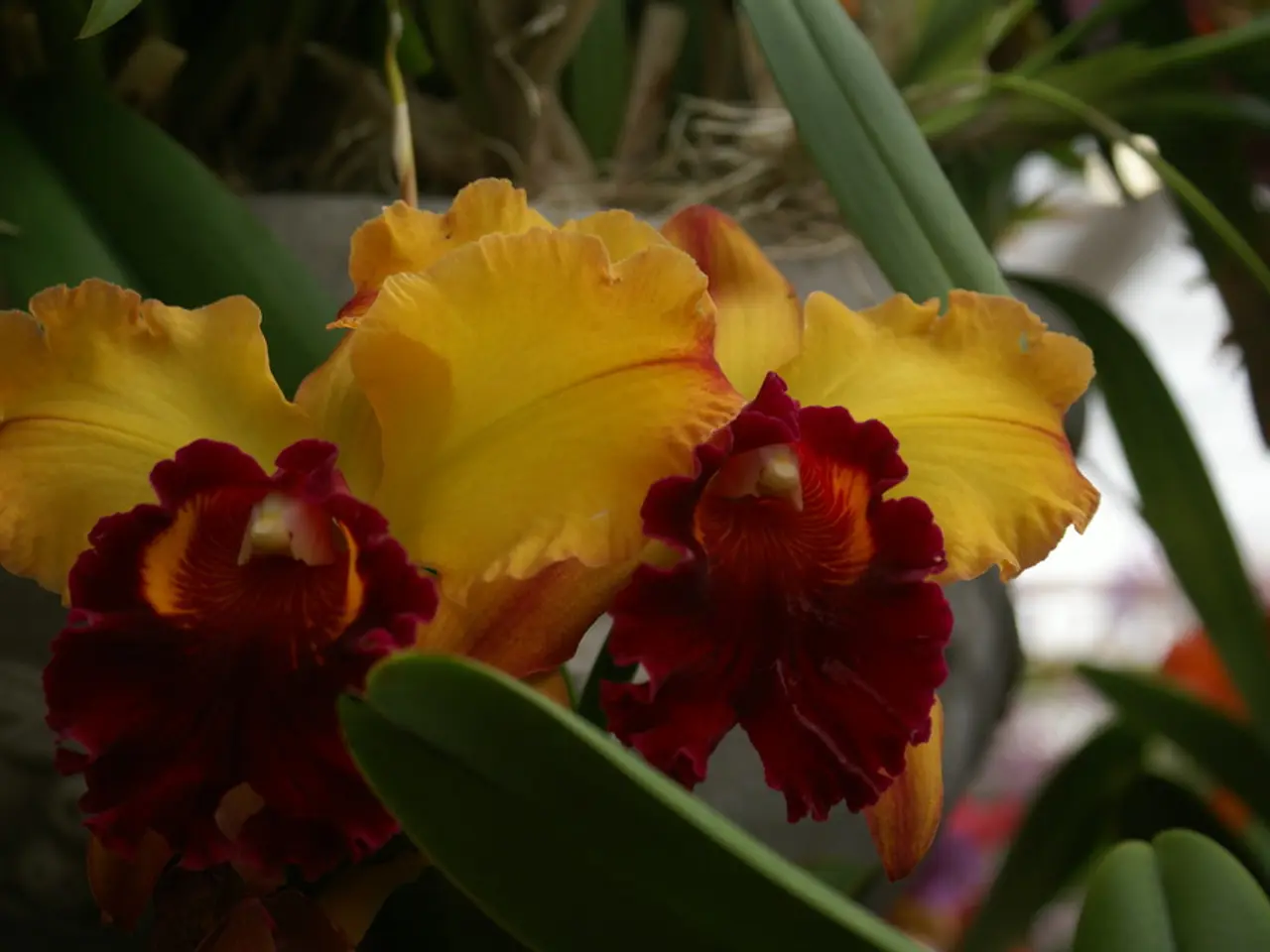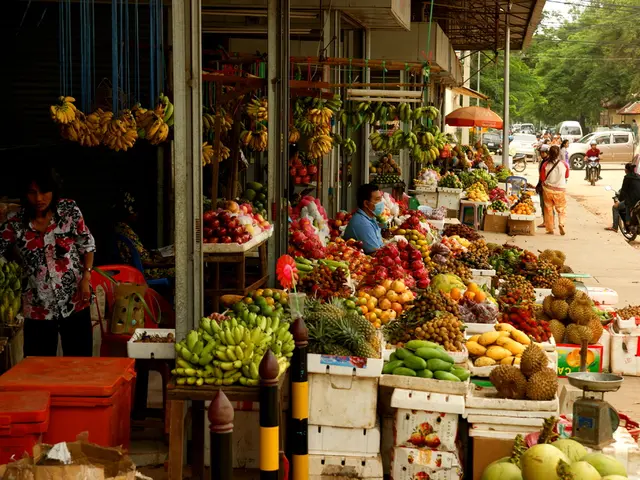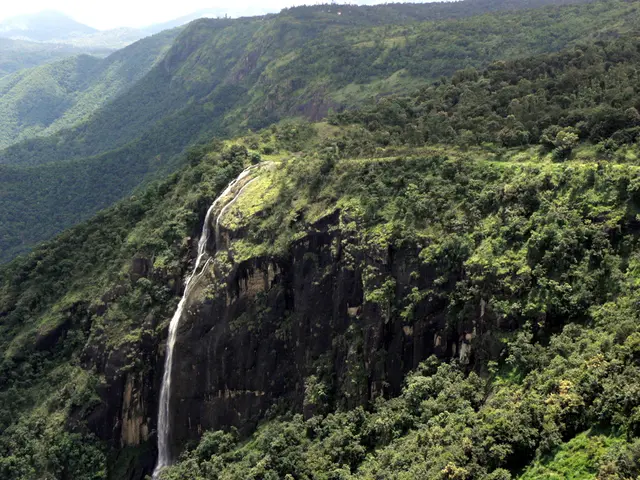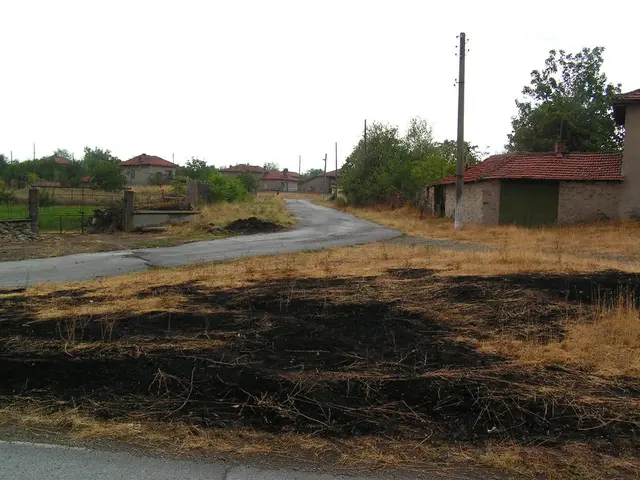Perennials That Attract Pollinators Throughout the Seasons Gain Favor Among Gardeners
Creating a Pollinator Garden: A Guide to Attracting Bees, Butterflies, and Hummingbirds
A vibrant pollinator garden can bring a splash of colour and life to any outdoor space, while also providing essential food sources for crucial pollinators. Here are some recommended perennial plants that will help you create a thriving pollinator haven.
Catmint (Nepeta spp.)
This easy-to-grow perennial produces spikes of lavender-blue or pink tubular flowers that are loved by bees, butterflies, and hummingbirds. Catmint thrives in sunny, well-drained soil and blooms repeatedly through the growing season.
Coral Bells (Heuchera spp.)
Native North American wildflowers with bell-shaped blooms rich in nectar, Coral Bells are a favourite among hummingbirds and butterflies. They are tolerant of USDA zones 4-9 and are suitable for containers.
Coneflowers (Echinacea)
Upright perennials with colourful blooms, Coneflowers are widely favoured by bees, butterflies, and hummingbirds. They bloom upright and offer nectar throughout their season.
Salvia
Providing long-lasting, brilliant flowers in various shades, Salvia attracts bees, butterflies, and hummingbirds and is drought-tolerant and resilient.
Coreopsis
Pairing well with Salvia, Coreopsis has warm-coloured blooms and attracts pollinators with a long bloom period.
Bee Balm (Monarda)
A native wildflower supplying abundant nectar with tubular flowers, Bee Balm is irresistible to many pollinators, including hummingbirds.
Milkweed (Asclepias)
Essential for monarch butterflies as a host plant, Milkweed also provides nectar for other pollinators. It thrives in sunny conditions and complements Bee Balm in the garden.
Butterfly Weed (Asclepias tuberosa)
A type of Milkweed preferred by butterflies, especially monarchs, for larval food and nectar.
Cardinal Flower (Lobelia cardinalis)
With tubular red flowers preferred by hummingbirds, Cardinal Flower allows them to feed with their long tongues.
A Variety of Natives
Choosing a variety of natives that bloom sequentially throughout the growing season—from early spring through late fall—ensures continuous food sources for pollinators. Native plants have co-evolved with local pollinators, often requiring less maintenance and supporting native wildlife effectively.
Planning Your Pollinator Garden
When planning your pollinator garden, place these perennials in sunny, well-drained locations to maximize their growth and attractiveness to pollinators. Combining plants like Salvia and Coreopsis or Bee Balm and Milkweed can create effective, visually appealing plant communities that support diverse pollinator populations.
By incorporating these recommended perennials into your garden, you'll be providing a bounty of food for pollinators while enjoying the beauty of vibrant blooms. A pollinator garden is not only a feast for the eyes but also an essential contribution to the health of our ecosystem.
Additional Tips
- Asters (Symphyotrichum spp.) are perennial flowers with bright daisy-like flowers that provide food for bees in late summer and autumn.
- Coral Bells varieties such as Heuchera 'Paris' are particularly loved by pollinators.
- Common Milkweed (Asclepias syriaca) is native to North America and is central to the life cycle of the monarch butterfly.
- Butterfly bush (Buddleia davidii) is a small perennial shrub with huge clusters of deep blue flowers that attract adult butterflies.
Supporting Pollinators
Pollinators rely on flower pollen, particularly from perennial flowers, as food. Planting pollinator-friendly plants can help support pollinator populations, while selecting native plants and practising integrated pest management can help reduce water, fertilizer, and pesticide use in the garden.
Watering Stations
To provide additional support for pollinators, consider installing Bee Cups—gorgeous ceramic pollinator water stations designed to keep them safe while they drink.
Seeds and Colour
Survival Garden Seeds' Milkweed Seed Collection contains three varieties to nurture pollinators. Foxgloves from Sweet Yards' Foxglove Mixed Colors Collection are easy to grow and will keep your garden full of colour for years to come. Russell Lupine Seeds from Eden Brothers contain a beautiful rainbow of vibrant colours.
By creating a pollinator garden, you're not only contributing to the survival of our planet's pollinators but also enjoying the beauty and vibrancy they bring to your outdoor space. Happy gardening!
- Incorporating science into gardening can help attract more pollinators.
- Health-and-wellness and gardening go hand in hand as a balanced lifestyle choice.
- Fitness-and-exercise is essential to maintain the energy needed for gardening.
- The health of our environment depends on the continued sexual-health of pollinators.
- Taking care of family-health is important to ensure time for family gardening sessions.
- Men's-health isn't forgotten, as regular exercise and fresh air during gardening can benefit them.
- Skin-care is crucial during outdoor activities like gardening, to prevent sunburns and insect bites.
- A well-maintained garden can improve one's nutrition through home-grown fruits and vegetables.
- Women's-health can also benefit from gardening, as it promotes mental and physical wellbeing.
- Menopause can make gardening exercises more challenging, but moderate efforts can still yield positive results.
- Parenting skills can be enhanced by teaching children about the importance of pollinators and how to grow a pollinator garden.
- Learning to cook a variety of simple recipes using fresh garden produce can be part of one's lifestyle.
- Lifestyle choices, such as gardening, can positively impact one's fashion-and-beauty choices by providing attractive and natural flowers.
- Increased focus on food-and-drink choices can lead to healthier eating habits with fresh, home-grown produce.
- Home-and-garden improvements inspired by a pollinator garden can be shared on various social media platforms, contributing to the lifestyle trend.
- Online resources like gardening forums, YouTube tutorials, and blog posts can help with learning more about creating a pollinator garden.
- Gardening tools and accessories, such as trowels, watering cans, and gloves, are essential for creating a pollinator garden.
- Gardening can foster productivity by providing a sense of accomplishment and satisfaction from creating a beautiful, functional outdoor space.
- Embracing career-development opportunities in the horticulture, sustainability, and environment sectors can lead to new and meaningful experiences.
- Electric vehicles can help those with larger gardens reduce their carbon footprint during the transportation of garden supplies.
- Personal-growth can come from taking on new challenges, like creating a pollinator garden, and learning to adapt to the needs of local pollinators.
- Mindfulness practices like meditation and yoga can improve one's focus and connection with nature during gardening.
- Skills-training workshops and classes, such as beekeeping and native plant identification, can deepen one's understanding of pollinators and their habitats.
- Encouraging sports like football, basketball, and golf can provide a break from gardening and serve as another form of personal growth.
- Champions-league winners like Cristiano Ronaldo and Lionel Messi can inspire one to maintain a productive and thriving pollinator garden.
- The NFL, WNBA, and MLB seasons can be enjoyed while taking breaks from gardening or during winter months when the garden is dormant.
- Hockey fans can appreciate the teamwork and commitment required to maintain a successful pollinator garden.
- Golf enthusiasts can indulge in the peaceful solitude of a well-manicured garden, reminiscent of the verdant golf courses they admire.
- Racing events like tennis tournaments, the Masters, Grand Prix, and auto racing can provide a thrilling adventure to contrast the calm, steady growth of a pollinator garden.




